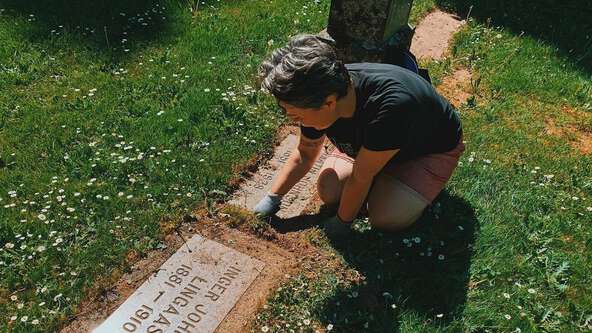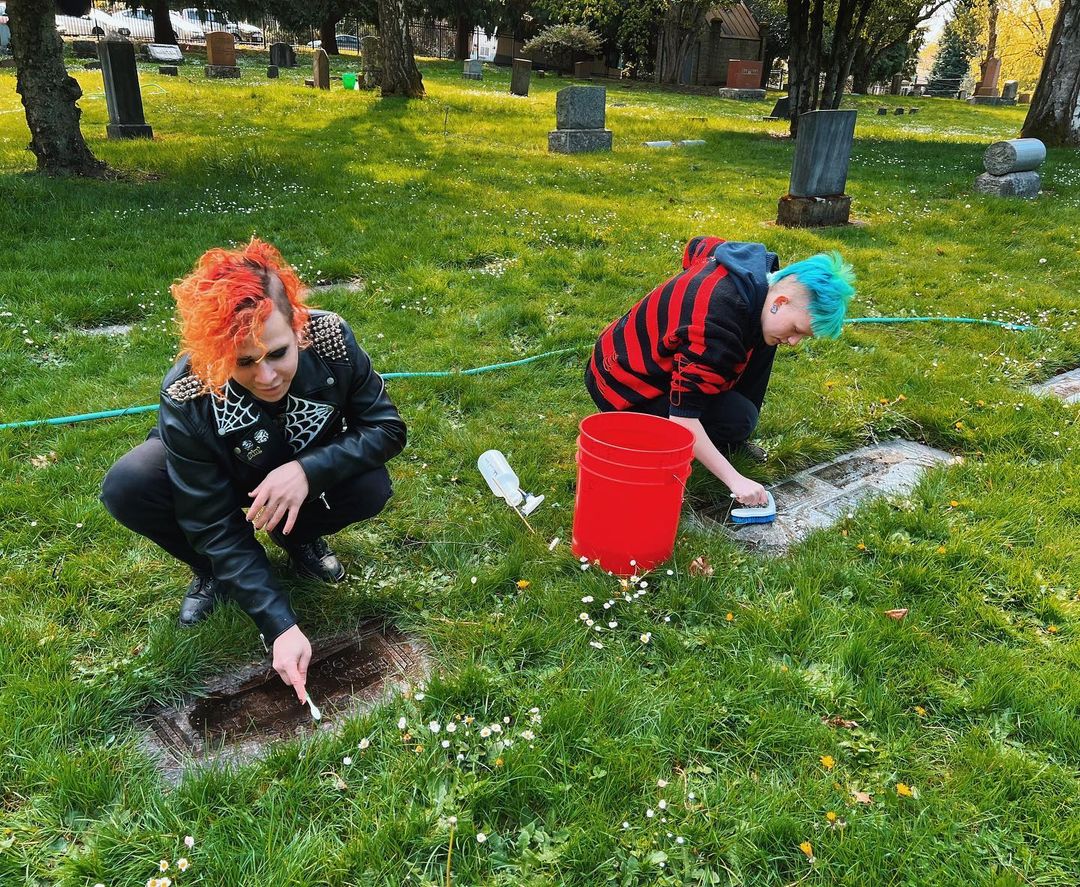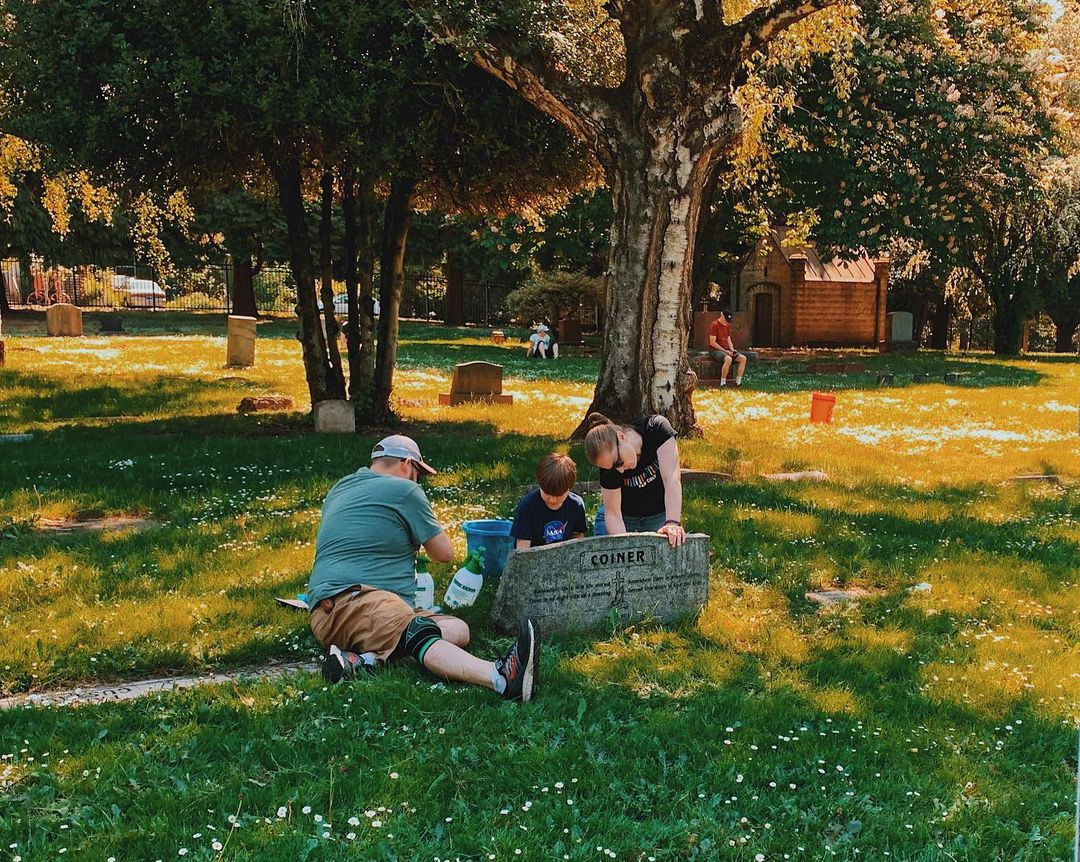Cleaning Tombstones: Social Media Pastime and Labor of Love

Powered by viral TikTok videos and a relic of pandemic hobbies, headstone cleaning continues to grow both online and in-person, with people coming together to participate in the community practice at cemeteries around the country.
From Michigan to Des Moines to St. Augustine to Pennsylvania, volunteers are busy scrubbing old tombstones, some as a community-minded project and others as a hobby, often accompanied by genealogy research (which also saw a surge during the pandemic).
Many who participate share their experiences on social media, some gaining thousands of followers, like Caitlin Abrams of Vermont or Anita Kallinicos of Florida. The hobby, especially taken up by influencers, requires a special kind of person, says BuzzFeed News.
Altruistic But Also Fun

“There is a certain level of altruism to it, but it is also really fun,” Katie Dyer, Site Steward and Vice Chair for the Friends of Lone Fir Cemetery in Portland, Oregon, tells Tulip Cremation. “We get different kinds of groups. Sometimes we’ll get a bunch of work friends who come out together. We’ve had birthday parties, even children’s birthday parties. We had one bachelorette’s party with women wearing sashes and tiaras at ten in the morning. It brings out all ages and types. It’s just a cool experience cleaning headstones as a crew,” Dyer explained. The cemetery was founded in 1855 and is managed by a local government entity and assisted by nonprofit groups. It’s over 30 acres with 25,000 graves.
Dyer says the surge has brought more active participation in the historic cemetery. “The resurgence has not slowed down since the pandemic. We had to actually buy more buckets, more brushes, more tools because we saw an uptick. A lot of that, of course, was TikTok as well. We saw a lot of people actively taking a role in the cemetery.” This engagement in the cemetery is just what the nonprofit group hoped for when it was founded almost 25 years ago.
Reclaiming Sacred Space
The Friends of the Lone Fir Cemetery was founded in 2000 as a response to vandalism at the city property. “There was almost an abandonment of the cemetery. What we have found is that there are increases in vandalism when there is no one around. Having people taking care of the site, stewarding the site, has an immense amount of power because it means we are claiming as a community this space, this sacred space, we are using it, we are visiting it, and it does wonders not just for cleaner stones, but (creating) more connected community.”
Dyer says it is important to remember not to use anything corrosive on a headstone or anything that will hurt the fauna and flora of the area. Lone Fir Cemetery is also Portland, Oregon’s second most extensive greenhouse, and in most cemeteries, there are plants and animals that toxic chemicals could harm. In classes at Lone Fire, headstone cleaning is done with only water, buckets, brushes, and hoses. Standard equipment also includes toothbrushes, dish scrubbers, chopsticks, and spatulas.
She recommends that anyone interested in doing headstone cleaning first ask for permission from the land’s owners and make sure they know what products could harm the stones, especially those that are historic.
She also offered this “pro tip”: Make sure to take a before photo before cleaning so you can appreciate your results.

So Many Stories, So Many Stones
Dyer says one of the benefits of this interest in gravestone cleaning is a normalization of death and of cemeteries, which at one time were often visited regularly by family members and even a location for picnics. This practice faded over time for many people. “It used to be a place you visited family. I think there’s something really beautiful about getting the community back into their history, back into where we came from. There are so many stories and so many stones, that tell such a complete history of the place, and we touch all of them.” Dyer said.
Dyer herself found comfort in the cemetery after losing her dad just a couple of months after getting involved in the group. Whether you are finding a place for the grief over a loved one or the love of your city, there’s something very powerful about visiting. “Just having a place to put a concerted energy to something that’s maybe otherworldly but feels incredibly out-of-this-world all the same.”
Want to read more? Discover how a shift in perspective can change our relationship with the end of life. No need for whispers—it's a conversation worth having. Read Easier End of Life Conversations: Setting the Stage to join the discussion.